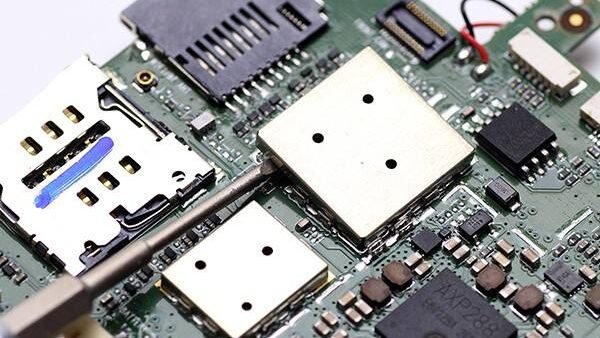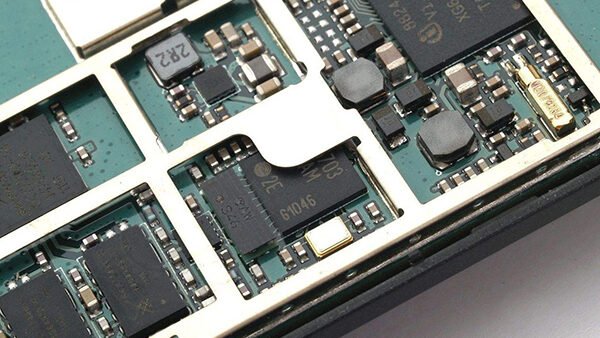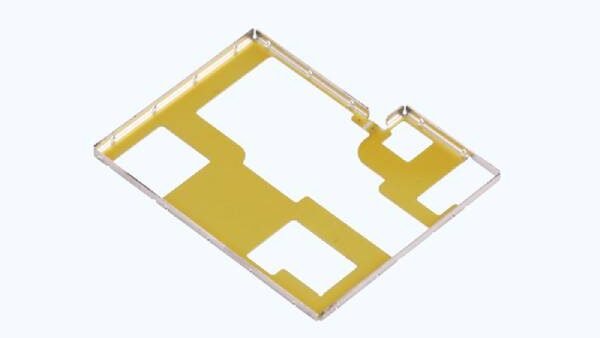Electromagnetic interference (EMI) and radio frequency interference (RFI) can disrupt the performance of electronic devices. Designing effective shielding is crucial to ensure device reliability. But what factors should you consider, and which materials are best suited for the task?
Appropriate shielding materials for EMI/RFI include conductive foams, conductive pads, metal enclosures, metal foils, metalized cloths, and even conductive glue or epoxy.
To delve deeper into the intricacies of EMI/RFI shielding design and understand the significance of each material, let’s explore further.

Understanding EMI/RFI and Its Impact
In our interconnected world, where electronic devices are integral to daily life, the concepts of Electromagnetic Interference (EMI) and Radio Frequency Interference (RFI) have become increasingly significant. These disturbances can compromise the performance of our devices, making it essential to understand their origins and implications.
What is EMI/RFI?
Electromagnetic Interference (EMI) and Radio Frequency Interference (RFI) are disruptions that can affect an electronic device’s operation due to either electromagnetic radiation or radio frequency radiation from an external source. While EMI is a broader term that encompasses disturbances from any electromagnetic source, RFI specifically pertains to those caused by radio frequencies. Common culprits include mobile phones, Wi-Fi routers, radios, and even certain household appliances. These sources can inadvertently introduce unwanted disturbances into other devices, leading to a range of operational issues.
The Need for Shielding
The ramifications of unchecked EMI/RFI are manifold:
- Data Disruption: Interference can lead to data corruption during transmission, resulting in loss or misinterpretation of information.
- Operational Failures: Devices, especially sensitive ones, can malfunction or even shut down when exposed to significant interference.
- Safety Hazards: In critical sectors, such as healthcare or aviation, EMI/RFI can lead to equipment failures with potentially life-threatening consequences.
- Decreased Efficiency: Continuous exposure can degrade a device’s performance over time, leading to reduced efficiency and lifespan.
Given these potential challenges, the importance of effective shielding becomes clear. Shielding not only ensures the smooth operation of devices but also extends their operational life and ensures safety in critical applications.

Key Materials for EMI/RFI Shielding
Shielding against EMI/RFI is paramount to ensure the optimal performance of electronic devices. Various materials, each with its unique properties and applications, can be used for this purpose. Let’s delve into some of the most commonly used materials for EMI/RFI shielding.
Conductive Foams
Conductive foams are soft, porous materials infused with conductive elements, often used for gasketing and sealing applications. Their properties include:
- Flexibility: Easily conforms to irregular shapes.
- Compression: Provides a tight seal against EMI/RFI.
- Applications: Commonly used in electronic enclosures, handheld devices, and communication equipment.
- Advantages: Lightweight, cost-effective, and offers good conductivity.
Conductive Pads
These are typically flexible sheets or pads made of conductive materials.
- High Conductivity: Ensures effective shielding against interference.
- Applications: Ideal for spaces with tight tolerances, such as between circuit boards and enclosures.
- Advantages: Easy to apply, versatile, and provides consistent shielding performance.
Metal Enclosures
Metal enclosures or boxes act as a barrier against EMI/RFI.
- Robust Protection: Offers a complete shield against external interference.
- Applications: Widely used in electronic devices, from mobile phones to industrial machinery.
- Advantages: Durable, long-lasting, and offers high shielding effectiveness.
Metal Foils
Thin sheets of metal, often adhesive-backed, used for shielding purposes.
- Highly Reflective: Reflects electromagnetic waves, preventing them from penetrating.
- Applications: Used in cables, circuit boards, and inside electronic device casings.
- Advantages: Lightweight, flexible, and can be easily applied to various surfaces.
Metalized Cloths
Fabrics woven with metallic threads or coated with a thin layer of metal.
- Flexibility: Can be molded to fit various shapes and sizes.
- Applications: Often used in wearable tech, curtains, and protective clothing.
- Advantages: Combines the flexibility of fabric with the conductivity of metal, offering effective shielding.
Conductive Glue or Epoxy
Adhesive materials infused with conductive particles.
- Seamless Integration: Can be applied to joints or gaps to ensure continuous shielding.
- Applications: Used to bond components while also providing EMI/RFI protection.
- Advantages: Dual functionality of bonding and shielding, easy to apply, and offers a solid shield against interference.

Factors to Consider in Shielding Design
Designing effective EMI/RFI shielding is not just about selecting the right material. It’s a holistic process that requires a deep understanding of the device’s functionality, the environment it will operate in, budget constraints, and the long-term durability and maintenance needs of the chosen shielding solution. Let’s delve deeper into these considerations.
Device Functionality
The primary function of a device can significantly influence the choice of shielding material. For instance:
- Sensitive Devices: Instruments like medical equipment or precision measuring tools might require more robust shielding solutions to prevent even the slightest interference.
- High-Frequency Devices: Devices operating at higher frequencies might need materials with higher conductivity to ensure effective shielding.
Environment
The external environment plays a pivotal role in determining the shielding needs.
- Temperature: Some shielding materials might degrade or lose their effectiveness at extreme temperatures. It’s essential to choose materials that can withstand the operating temperature range of the device.
- Humidity: Moist environments can corrode certain shielding materials, reducing their effectiveness over time.
- Interference Sources: In areas with a high density of electronic devices or strong radio signals, more robust shielding might be necessary.
Cost Implications
While it’s crucial to have effective shielding, it’s equally important to consider the budget.
- Initial Costs: Some high-end materials might offer excellent shielding but come at a higher initial cost.
- Long-Term Savings: Investing in durable, high-quality shielding can lead to long-term savings by reducing maintenance costs and increasing device lifespan.
Durability and Maintenance
The longevity of the shielding material and its maintenance needs are vital considerations.
- Wear and Tear: Materials that can withstand regular wear and tear without degrading are preferable, especially for devices with longer operational lifespans.
- Maintenance Needs: Some shielding solutions might require regular checks and replacements. It’s essential to factor in these maintenance costs and efforts when choosing a material.

EMI/RFI Shielding Stamping
Electromagnetic Interference (EMI) and Radio Frequency Interference (RFI) are disturbances that can affect the operation of electronic devices. Shielding against these interferences is crucial to ensure the optimal performance and reliability of devices. One of the effective methods to create these shields is through stamping.
What is EMI/RFI Shielding Stamping?
EMI/RFI Shielding Stamping is a manufacturing process where sheets of conductive materials, such as metals, are stamped into specific shapes and sizes to create shields for electronic components. These stamped shields are then integrated into devices to protect them from external electromagnetic and radio frequency interferences.
Advantages of EMI/RFI Shielding Stamping:
- Precision: Stamping allows for the creation of shields with precise dimensions, ensuring a perfect fit for the device or component.
- Cost-Effective: Stamping is a scalable process, making it cost-effective for producing large quantities of shields.
- Versatility: Different materials, such as copper, aluminum, or steel, can be used in the stamping process, allowing for the creation of shields tailored to specific needs.
- Durability: Stamped shields are robust and can withstand various environmental conditions, ensuring long-lasting protection.
Applications
- Consumer Electronics: Devices like smartphones, tablets, and laptops often incorporate stamped shields to protect their internal components from EMI/RFI.
- Medical Devices: Precision instruments and devices, such as MRI machines or pacemakers, use stamped shields to ensure accurate operation without interference.
- Automotive: Modern vehicles, with their myriad of electronic components, utilize stamped shields to prevent interference between different systems.
- Aerospace: Aircraft instruments and communication systems are shielded using stamped components to ensure reliable operation.
EMI/RFI Shielding Stamping is a vital process in the electronics manufacturing industry, ensuring that devices operate reliably without interference. As electronic devices become more integrated into our daily lives, the importance of effective shielding, such as that provided by stamping, will only continue to grow.

Conclusion
In an era dominated by electronic devices, the significance of shielding against EMI/RFI cannot be overstated. These interferences, if unchecked, can compromise the functionality, reliability, and longevity of devices. The myriad of shielding materials and techniques available, from conductive foams to metal enclosures, offer tailored solutions for diverse applications. By meticulously understanding these materials and aligning them with the device’s requirements and its operational environment, we can ensure that our devices not only function optimally but also stand the test of time. The investment in effective shielding is an investment in the device’s durability, efficiency, and overall performance.



